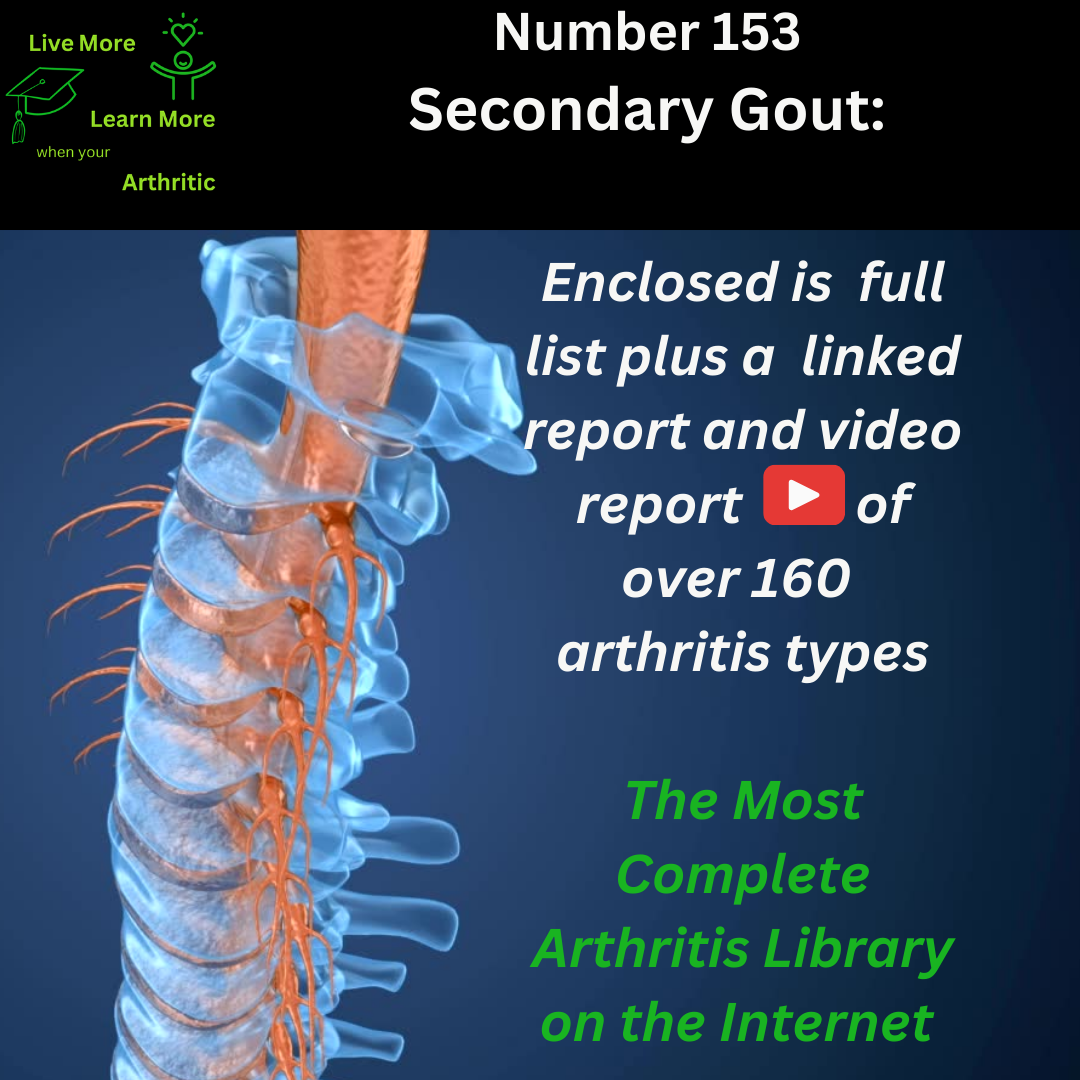
Secondary Gout: Number 153 Types of Arthritis
Understanding Secondary Gout and its Interplay with Other Forms of Arthritis
Secondary gout, a condition where uric acid builds up due to another underlying health issue, can overlap with certain forms of arthritis, particularly inflammatory types. One significant overlap is with rheumatoid arthritis (RA). In RA, the immune system attacks joints, leading to inflammation. This inflammation can trigger the release of uric acid, contributing to secondary gout.
 Inflammatory Nature of Secondary Gout
Inflammatory Nature of Secondary Gout
Secondary gout is indeed classified as an inflammatory arthritis. When uric acid crystallizes in joints and tissues, it triggers an immune response, causing inflammation. This inflammation leads to the characteristic symptoms of redness, warmth, swelling, and pain.
Most Affected Body Parts and Joints
The joints most affected by secondary gout include the big toe, ankle, knee, wrist, and elbow. However, it can affect any joint in the body. The inflammation typically starts in one joint but can spread to multiple joints over time if left untreated.
Remission and Symptoms
Remission in secondary gout is possible through effective management of the underlying cause and lifestyle changes. However, the disease can flare up again if uric acid levels rise. Symptoms include intense pain, swelling, tenderness, and limited range of motion in affected joints.
Disease Description, Causes, and Triggers
Secondary gout is caused by conditions that increase uric acid production or decrease its excretion, such as kidney disease, metabolic syndrome, or certain medications. Triggers include diets high in purines (found in red meat and seafood), alcohol consumption, dehydration, and certain medications like diuretics.
Onset and Lifespan Impact
The common ages of first onset for secondary gout range from 30 to 60 years. Left untreated, this arthritis can lead to joint damage and a reduced lifespan due to associated health risks like cardiovascular disease and kidney damage.
Autoimmune Nature and Risk Factors
Secondary gout is not typically considered an autoimmune disease. Risk factors include obesity, high blood pressure, diabetes, and family history of gout. Certain medications like diuretics and low-dose aspirin can also increase the risk.
Complications and Comorbidities
Complications of secondary gout include chronic joint damage, kidney stones or kidney disease, tophi (lumps of uric acid crystals under the skin), and cardiovascular disease due to chronic inflammation. Comorbidities can include metabolic syndrome, diabetes, and hypertension.
Impact of Inflammation on Range of Motion
Swelling and inflammation in secondary gout can cause significant joint stiffness and decreased range of motion. The accumulation of uric acid crystals within joints can also damage cartilage, further limiting movement.
Achieving Quality of Life with Localized Cutaneous Lupus
Localized Cutaneous Lupus (LCLE) primarily affects the skin, causing rashes and lesions. While it’s generally less severe than systemic lupus, it can impact quality of life. Proactive management includes sun protection, topical steroids, and avoiding triggers like stress.
Complications and Common Ages Affected
Complications of LCLE can include scarring, skin infections, and possible progression to systemic lupus erythematosus (SLE). It often affects younger individuals, with most cases diagnosed between ages 20 and 45. Women are more commonly affected than men.
 Interconnected Diseases and Conditions
Interconnected Diseases and Conditions
LCLE is associated with other autoimmune conditions like SLE and Sjögren’s syndrome. Regular monitoring for systemic involvement is crucial, as LCLE can sometimes evolve into SLE.
Comparison with Primary Arthritis
Primary arthritis, like osteoarthritis (OA), primarily results from wear and tear on joints, whereas secondary gout stems from metabolic abnormalities. Unlike secondary gout, primary arthritis is not directly related to uric acid levels.
